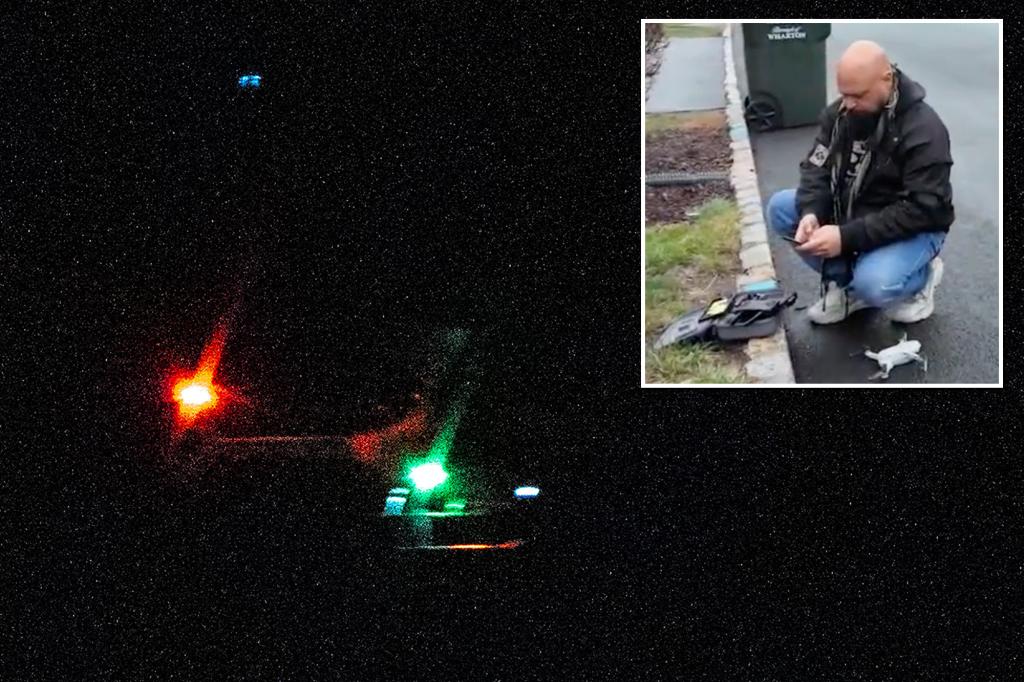The persistent drone sightings over New Jersey, commencing around November 18 and continuing for several weeks, have evolved into a significant concern, prompting the involvement of federal agencies like the FBI and Homeland Security. The mysterious nature of these nightly flights along the Eastern Seaboard has sparked anxiety and calls for action, including from President-elect Donald Trump, who urged shooting down the unidentified objects. Despite the growing public unease and demands for transparency, federal authorities have remained tight-lipped, offering no official explanation about the origin or purpose of the drones. This silence has further fueled speculation and raised questions about potential security threats and the government’s response. The lack of information has created a vacuum, allowing various theories and narratives to proliferate, contributing to the public’s apprehension.
The escalating situation highlights the challenges posed by unidentified aerial phenomena, especially in densely populated areas like the Eastern Seaboard. The drones’ persistent presence raises concerns about their potential capabilities, ranging from surveillance to the delivery of hazardous materials. The lack of clear communication from federal authorities, coupled with the sheer number of sightings, underscores the need for a robust system to identify and address such incidents swiftly and transparently. The incident also exposes the limitations of current regulations regarding unmanned aerial vehicles and the necessity for a comprehensive framework to manage their use and prevent misuse. The ongoing investigation by the FBI and Homeland Security marks a crucial step towards understanding the nature of these drone flights and determining the appropriate course of action.
The involvement of the FBI and Homeland Security signals a shift in the official response, transitioning from local and state authorities to a federal-level investigation. Their expertise in counterintelligence and national security investigations is critical to assess the potential threat posed by these drones. The agencies will likely examine various possibilities, including the involvement of foreign actors, criminal organizations, or even individuals engaging in recreational drone activities that have gone awry. Their investigation will likely encompass forensic analysis of any recovered drone debris, interviews with witnesses, and collaboration with other intelligence agencies to piece together the puzzle and identify the responsible parties. This comprehensive approach is essential to determine the true nature of the drone operations and implement effective countermeasures.
The public’s demand for transparency from the government underscores the importance of open communication in situations involving national security. The lack of official information has fueled speculation and fostered an environment of uncertainty, leading to calls for action that may not be based on factual understanding. While the government needs to balance national security concerns with the public’s right to know, proactive communication can help mitigate anxieties and prevent the spread of misinformation. Regularly updated briefings from authorized officials can provide much-needed clarity and reassure the public that the situation is being addressed effectively. Transparent communication builds trust between the government and its citizens, fosters cooperation, and ensures a more informed and effective response to potential threats.
President-elect Donald Trump’s call to shoot down the drones reflects a sense of urgency and a desire for immediate action. However, such a course of action carries significant risks, especially in populated areas. The potential for collateral damage and unintended consequences needs to be carefully considered before resorting to such measures. Furthermore, shooting down the drones might destroy valuable evidence that could help investigators understand their origin and purpose. A comprehensive investigation, rather than impulsive action, is crucial to address the root cause of the drone activity and develop long-term solutions to prevent similar incidents in the future. A measured response based on evidence and expert analysis is essential to mitigate risks and ensure public safety.
The ongoing drone incident over New Jersey serves as a wake-up call, highlighting the evolving challenges posed by unmanned aerial technology. The incident underscores the need for robust regulatory frameworks, enhanced surveillance capabilities, and clear communication protocols to manage the increasingly complex airspace. The investigation by the FBI and Homeland Security marks an essential step towards understanding the nature of this specific incident. But beyond that, it also presents an opportunity to develop a comprehensive national strategy to address the broader challenges posed by unmanned aerial systems, ensuring the safety and security of our airspace and the public. This incident necessitates a reevaluation of existing regulations and the development of new strategies to effectively address the potential threats posed by unmanned aerial vehicles in the future.

